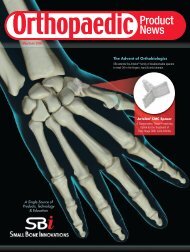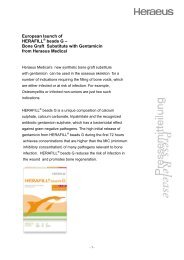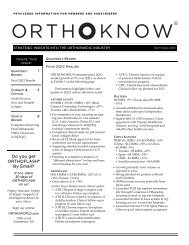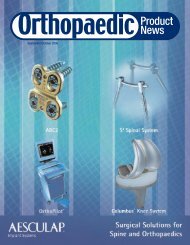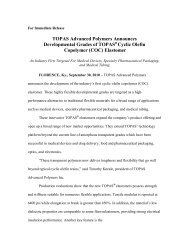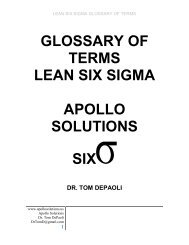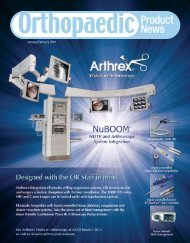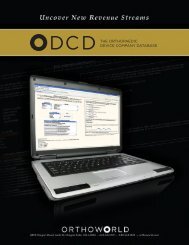Hip & Knee Surgery - Orthoworld
Hip & Knee Surgery - Orthoworld
Hip & Knee Surgery - Orthoworld
Create successful ePaper yourself
Turn your PDF publications into a flip-book with our unique Google optimized e-Paper software.
FUTURETECH UPDATEThe Potential for RepairingMeniscal White Zone TearsAuthor: Randall Holcomb, M.D.In the July/August 2006 issue of ORTHOPAEDIC PRODUCTNEWS, we featured an article about technology for the repair ofavascular meniscus tissue. Since that time, the technology has beenreleased to clinical use under a 510(k). The following serves as anupdate.In the past 75 years, the knee joint meniscus has transitionedfrom a poorly understood “vestigial remnant” to becoming thestructural cornerstone of the knee. Indeed, in 1897, Suttondescribed the meniscus as “functionless remains” of the legmuscle, although twelve years earlier in 1885, ThomasAnnandele described the first surgical meniscal repair. Inensuing years, the knee joint meniscus was relegated toobscurity until 1936, when King published his work on meniscusrepair in dogs.Twelve years later, in 1948, Fairbank published his landmarkwork on the disappointing outcome of total meniscal removaland subsequent degenerative changes seen radiographically. Foranother 30 years, very little change occurred in treating meniscalinjury. Extirpation was the mainstay of surgical treatment. In the1970s and early 1980s, a veritable meniscal renaissance occurred.Major scientific inroads in understanding meniscal biology andbiomechanics appeared in peer reviewed literature. Contributorssuch as Arnozky and Henning spoke of actual treatments formeniscal injury, instead of extraction.In the 1980s, it would be virtually impossible to attend asports medicine conference or knee symposium without hearingnumerous variations on the meniscus repair theme. Dehaven,Cannon and many others wrote of repair techniques withvarious descriptors such as “inside out,” “outside in,” and “allinside,” indicating the surgical approach. Despite their technicaldifferences, each had one common purpose: repair of the kneejoint meniscus.The past ten years have yielded many excellent reviews ofmeniscal repair concepts, details of which are beyond the scopeof this article. They share a common and somewhat disturbingfinding. The “success” of meniscal repair varies from 50 to 75percent. As is so often the case, the “devil is in the details” ofoutcomes reporting. One can interpret success in many ways,but the elephant in the room is that incomplete rim healing wascommon. Even though some patients were asymptomatic orminimally symptomatic, healing defects were frequentlypresent.Some authors reported revision rates of 20 percent or moreand healing failure rates of 36 percent. Prognostic factors weredescribed as both positive and negative. The positive factorsinclude anterior cruciate ligament injury, acute repair, rim widthless than three millimeters and tears involving the lateralmeniscus. Negative factors reported were residual ligamentinstability, pink and white zone tears, and older age.The answer to this clinical conundrum may lie in themeniscus vascularity. In 1936, King and co-workers firstdescribed the sequence of events in meniscal healing. Since then,numerous experimental observations have demonstrated theability of the peripheral blood supply of the meniscus to providea reparative response to injury.A fibrin clot forms that is rich in inflammatory cells. Next inthe healing sequence, comes the invasion of the scaffold byadjacent blood vessels from the synovium. This is accompaniedby proliferation of undifferentiated mesenchymal cells. Withtime, the tear is filled with fibrovascular tissue that becomescontiguous with adjacent meniscal tissue. This scar eventuallymatures into normal-appearing fibrocartilage in several months.Thus, even to the casual observer, it becomes apparent there isno vascular supply, and no repair sequence. It appears that the“Holy Grail” of meniscal healing may be linked to the extent orpattern of tear vascularity.While meniscal repair is generally limited to the red/red orred/white zone, experimental techniques have shown the abilityfor white/white lesions to heal. For years, investigators havestudied the potential for healing via vascular access channels.continued on page 4342 ORTHOPAEDIC PRODUCT NEWS • November/December 2009



